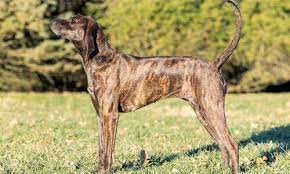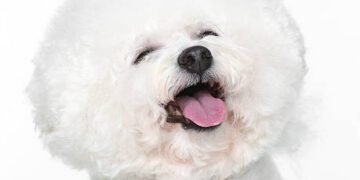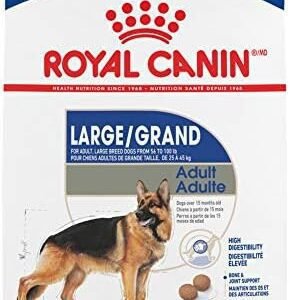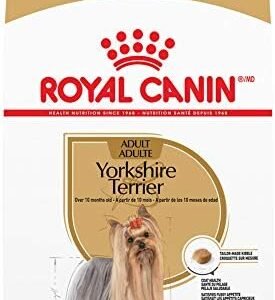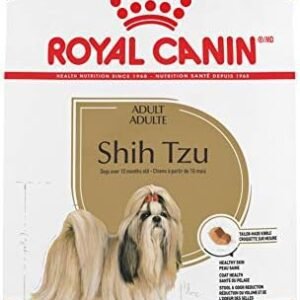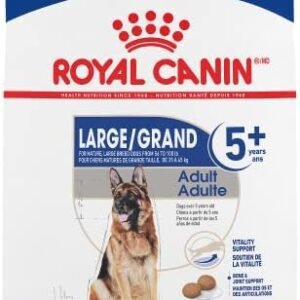Greyhounds, often referred to as the “gentle giants” of the dog world, are a remarkable breed known for their incredible speed, elegance, and gentle nature. In this comprehensive guide, we will delve into the unique characteristics and care requirements of the greyhound dog breed, ensuring you have all the information you need to understand and appreciate these magnificent canines.
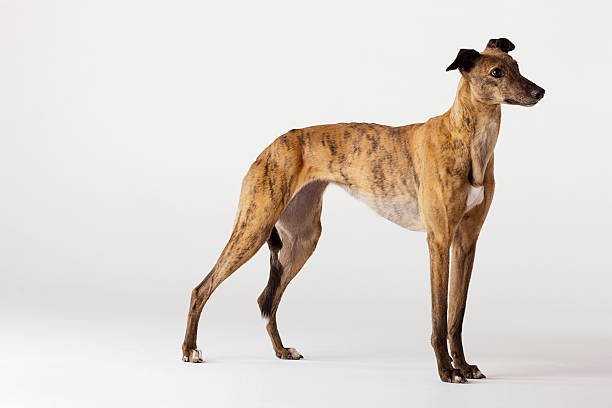
Greyhounds have a rich history that dates back thousands of years, and their charm has captivated dog lovers worldwide. Whether you’re considering adopting a greyhound or simply want to learn more about this breed, you’ve come to the right place.
Greyhound Dog Breed Overview
To provide you with a quick reference, here’s a table summarizing key details about the greyhound breed:
Please note that greyhounds are a diverse breed, and specific characteristics can vary from one individual to another. Now, let’s delve deeper into each of these aspects to uncover what makes the greyhound breed so unique.
Here is the table I filled for the greyhound dog breed based on the web search results:
| Attribute | Value |
|---|---|
| Height | Males: 71 to 76 cm (28 to 30 in); Females: 66 to 71 cm (26 to 28 in) |
| Weight | Males: 27 to 40 kg (60 to 88 lb); Females: 25 to 34 kg (55 to 75 lb) |
| Life span | 10 to 14 years |
| Good with | Family, children, other dogs, but may chase small animals |
| Temperament | Gentle, noble, sweet-tempered, independent, loving, and intelligent |
| Intelligence | High; can learn commands quickly and respond well to positive reinforcement |
| Shedding amount | Low; sheds minimally and requires little grooming |
| Grooming | Easy; needs regular baths and weekly rubdowns with a soft brush or hound glove |
| Exercise needs | Moderate; needs daily walks or runs and a fenced area to sprint occasionally |
| Energy level | Low to medium; tends to be calm and relaxed indoors, but can be energetic outdoors |
| Barking level | Low; rarely barks unless excited or provoked |
| Drool amount | Low; does not drool excessively unless very hot or thirsty |
| Coat length/texture | Short, smooth, and easy to maintain |
| Colors | Approximately 30 recognized color forms, including variations of white, brindle, fawn, black, red, and blue |
| Patterns | Solid, parti-color, ticked, black mask |
2. Breed History and Origin

Exploring Their Roots
The history of the greyhound breed is a fascinating journey that takes us back thousands of years. These graceful dogs have a rich and storied past, with evidence of their existence dating back to ancient civilizations. Let’s delve into the historical development of the greyhound breed and the breeds that played a crucial role in its formation.
1. Ancient Beginnings: The greyhound’s origins can be traced to ancient Egypt, where they were revered and often depicted in art and hieroglyphics. These early greyhounds were known for their incredible speed and hunting prowess.
2. Roman Influence: The greyhound’s popularity spread across the Roman Empire, where they were used for hunting large game, such as deer and boar. The Romans greatly admired the breed’s speed and agility, and they played a pivotal role in the breed’s development.
3. Celtic Connection: Celtic tribes also had a deep appreciation for greyhounds. They were highly regarded for their hunting abilities, and their sleek appearance made them symbols of nobility.
4. Medieval Europe: During the Middle Ages, greyhounds became favored companions of European nobility. They were often seen in the company of kings and queens and were even featured in medieval manuscripts.
5. English Greyhounds: The greyhound as we know it today began to take shape in England during the 18th century. Breeders focused on refining the greyhound’s speed and agility, resulting in the sleek and elegant dogs we see today.
Notable Traits
Greyhounds possess several distinctive traits that have contributed to their enduring appeal throughout history. These traits set them apart from other breeds and make them truly unique:
1. Speed: Greyhounds are renowned for their incredible speed, capable of reaching up to 45 miles per hour. This exceptional athleticism is a testament to their hunting heritage.
2. Elegance: Their slender, graceful bodies and long legs give them an air of elegance that few breeds can match. Greyhounds are often considered one of the most beautiful dog breeds.
3. Gentle Temperament: Despite their racing prowess, greyhounds are known for their gentle and calm temperament. They are affectionate and well-suited to family life.
4. Minimal Grooming: Greyhounds have short, smooth coats that require minimal grooming. This makes them a low-maintenance breed in terms of grooming needs.
Relevance of Origin
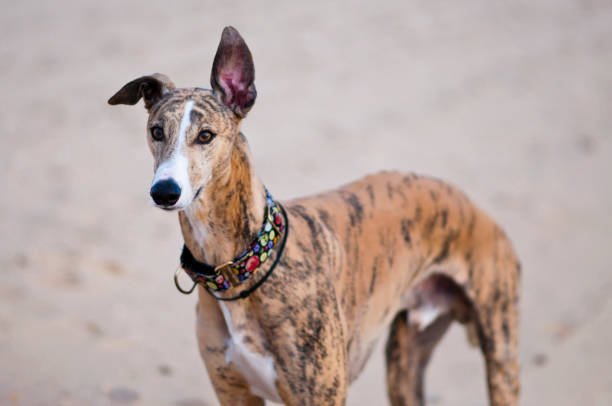
Understanding the origin of the greyhound breed is crucial to appreciating their characteristics today. The historical development of the breed has left a lasting imprint on their nature and behavior:
1. Hunting Instincts: The greyhound’s history as a hunting dog is still evident in their strong prey drive. While they may not be hunting large game today, they may still chase smaller animals.
2. Speed and Agility: Centuries of breeding for speed and agility have made greyhounds the fastest dog breed. This athleticism is a direct result of their historical purpose.
3. Calm Demeanor: Despite their history as hunters, greyhounds have evolved into gentle and calm companions. Their ability to switch between high-energy bursts and relaxation makes them well-suited to modern family life.
In summary, the greyhound’s history and origin are deeply intertwined with the development of their unique traits and characteristics. From ancient Egypt to modern family homes, these dogs have a remarkable journey that continues to captivate dog enthusiasts worldwide.
3. Understanding the Greyhound Breed’s Traits

Physical Characteristics
Greyhounds are easily recognizable by their distinct physical attributes. Let’s take a closer look at their size, coat type, color variations, and any distinguishing features that make them stand out:
1. Size: Greyhounds are a large breed with a slim and athletic build. They typically stand between 27 to 30 inches tall at the shoulder and weigh between 60 to 70 pounds for males and slightly less for females.
2. Coat Type: Greyhounds have a short and smooth coat that requires minimal grooming. This short coat helps them maintain their speed and agility.
3. Color Variations: Greyhounds come in a wide range of coat colors, including fawn, brindle, black, blue, white, and various shades in between. Some greyhounds have solid coats, while others exhibit brindle patterns.
4. Distinguishing Features: One of the most distinguishing features of the greyhound is their long, slender legs and a deep chest. They have a sleek and aerodynamic body built for speed. Their head is narrow and refined, with expressive eyes.
Temperament Overview
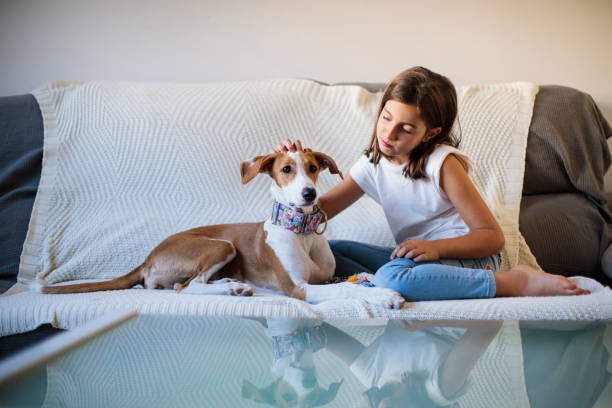
Greyhounds are known for their gentle and amiable temperament, making them well-suited as family pets. Here’s an overview of their temperament, including their suitability for families, interactions with children, and compatibility with other pets:
1. Family-Friendly: Greyhounds are generally considered to be excellent family dogs. Their calm and affectionate nature makes them great companions for households of all sizes.
2. Safe with Children: Greyhounds are known for their patience and tolerance, making them safe around children. However, it’s essential to supervise interactions, especially if the dog is not familiar with young children.
3. Compatibility with Other Pets: Greyhounds typically get along well with other dogs and even cats, provided they are properly introduced and socialized. Their hunting instincts may cause them to chase smaller animals, so caution is needed.
4. Reserved Nature: While they are friendly, greyhounds can also be somewhat reserved or aloof with strangers. This reserved nature makes them excellent watchdogs without being overly aggressive.
Environmental Needs
Understanding the environmental needs of greyhounds is essential for providing them with a comfortable and happy life in your home:
1. Space: Greyhounds, despite their large size, are known for their ability to adapt to apartment living. They don’t require a large yard, but they do benefit from regular exercise, such as daily walks or trips to a dog park.
2. Temperature Sensitivity: Greyhounds have thin skin and a lean body, which makes them sensitive to extreme temperatures. They may require a sweater or coat in cold weather and should be protected from excessive heat.
3. Comfortable Resting Areas: Providing your greyhound with comfortable bedding is crucial, as they love to lounge and relax. Soft and supportive bedding helps protect their sensitive joints.
Training and Socialization
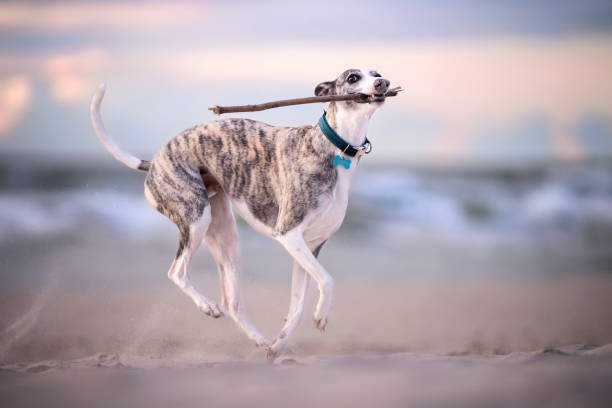
Training and socialization are critical aspects of raising a well-behaved greyhound:
1. Trainability: Greyhounds are intelligent dogs but can sometimes be independent. Consistent and positive reinforcement-based training methods work best with this breed. They respond well to treats and praise.
2. Socialization: Proper socialization from a young age is essential to ensure your greyhound is comfortable around people and other dogs. Expose them to various environments, sounds, and experiences to build their confidence.
3. Leash Training: Greyhounds have a strong prey drive, so leash training is crucial. They may be inclined to chase small animals, so a secure leash and a controlled environment are essential during walks.
In conclusion, greyhounds are known for their physical elegance, gentle temperament, and adaptability to various living environments. With proper training, socialization, and attention to their unique needs, greyhounds can make wonderful additions to families and homes of all kinds.
4. Health Considerations and Care
Taking care of your greyhound’s health is paramount to ensuring a long and happy life. In this section, we will discuss common health issues that greyhounds may be prone to, their average lifespan, dietary needs, exercise requirements, and grooming practices.
Common Health Issues
While greyhounds are generally a healthy breed, like all dogs, they can be susceptible to certain health issues. It’s essential to be aware of these potential problems and seek regular veterinary check-ups to catch and address them early:
1. Bloat (Gastric Torsion): Greyhounds, like other deep-chested breeds, can be prone to bloat, a life-threatening condition where the stomach fills with gas and twists on itself. Immediate veterinary attention is crucial if you suspect bloat.
2. Osteosarcoma: Greyhounds have a higher risk of developing osteosarcoma, a type of bone cancer. Early detection and treatment are vital for the best outcomes.
3. Heart Disease: Dilated cardiomyopathy (DCM) is a heart condition that can affect greyhounds. Regular cardiac check-ups can help monitor and manage this condition.
4. Hypothyroidism: Greyhounds may develop hypothyroidism, a condition where the thyroid gland doesn’t produce enough hormones. Medication can help manage this issue.
5. Skin Sensitivities: Some greyhounds are sensitive to skin irritants, so be mindful of their skin care, and choose gentle grooming products.
Lifespan and Longevity
The average lifespan of a greyhound typically ranges from 10 to 14 years. To promote a longer and healthier life for your greyhound, consider the following tips:
1. Regular Veterinary Check-ups: Schedule annual check-ups with your veterinarian to monitor your greyhound’s health, catch any issues early, and keep vaccinations up to date.
2. Healthy Diet: Feed your greyhound a balanced diet with high-quality dog food. Consult with your veterinarian to determine the best diet for your dog’s age, activity level, and any specific health concerns.
3. Weight Management: Greyhounds are prone to obesity, which can exacerbate health problems. Monitor their weight and adjust their diet as needed to maintain a healthy body condition.
4. Exercise and Mental Stimulation: Greyhounds have a lot of energy, and regular exercise is crucial. Daily walks and playtime help keep them physically fit and mentally stimulated.
5. Dental Care: Maintain good dental hygiene by brushing your greyhound’s teeth regularly and providing dental chews or toys to help prevent dental issues.
Diet and Nutrition
Proper nutrition is essential for your greyhound’s overall health and well-being:
1. High-Quality Dog Food: Choose a high-quality commercial dog food that is appropriate for your greyhound’s age, size, and activity level.
2. Portion Control: Greyhounds can be prone to obesity, so be mindful of portion sizes and follow feeding guidelines provided by the dog food manufacturer or your veterinarian.
3. Avoid Table Scraps: Avoid feeding your greyhound table scraps, as some human foods can be harmful to dogs.
4. Fresh Water: Ensure your greyhound has access to clean and fresh water at all times.
Exercise and Activity
Greyhounds are known for their athleticism, and they require regular exercise to stay healthy and happy:
1. Daily Walks: Take your greyhound for daily walks to help burn off energy and keep them physically fit.
2. Playtime: Engage in interactive play sessions with toys to provide mental stimulation and prevent boredom.
3. Off-Leash Exercise: Greyhounds have a strong prey drive, so it’s important to provide a secure, fenced area for off-leash exercise.
Grooming and Maintenance
Maintaining your greyhound’s grooming needs is relatively straightforward:
1. Coat Care: Their short, smooth coat requires minimal grooming. Brush your greyhound occasionally to remove loose hair and keep their coat shiny.
2. Ear and Eye Cleaning: Regularly check and clean your greyhound’s ears and eyes to prevent infections and irritations.
3. Dental Care: Brush their teeth regularly to prevent dental issues. Dental chews and toys can also help with oral hygiene.
4. Shedding: While greyhounds have short coats, they do shed moderately. Regular brushing can help minimize shedding.
In conclusion, providing proper care for your greyhound involves regular veterinary check-ups, a balanced diet, exercise, and grooming. By addressing their specific needs and staying vigilant about their health, you can enjoy a long and loving companionship with your greyhound.
5. Choosing and Adopting a Greyhound Dog Breed
Adopting a greyhound can be a rewarding experience, both for you and the dog. In this section, we’ll explore the reasons for choosing to adopt a greyhound, how to research and prepare for adoption, the adoption process, and ethical considerations surrounding breeding.

Reasons for Adoption
Adopting a greyhound is a choice that comes with several benefits, not only for you but also for the dog and the broader community:
1. Giving a Second Chance: Many greyhounds are retired racing dogs or rescue dogs in need of loving homes. By adopting, you provide them with a second chance at a happy life.
2. Saving Lives: When you adopt a greyhound, you’re saving a life and reducing the demand for puppy mills and unethical breeding practices.
3. Mature Companionship: Greyhounds are typically retired from racing at a relatively young age, which means you can adopt a mature dog that’s past the puppy stage. This can be a great choice if you’re looking for a calm and well-behaved companion.
4. Breed-Specific Characteristics: By adopting a greyhound, you’re getting a dog with well-known characteristics, making it easier to anticipate their needs and compatibility with your lifestyle.
Research and Preparation
Before adopting a greyhound, it’s crucial to do your homework and make necessary preparations:
1. Understand the Breed: Research the specific needs and characteristics of greyhounds. They are known for their speed and athleticism, but they also have unique quirks, such as their sensitivity to cold due to their short coats.
2. Financial Responsibilities: Owning a dog comes with financial responsibilities, including food, grooming, veterinary care, and potential emergencies. Make sure you can provide for your greyhound’s needs.
3. Assess Your Lifestyle: Consider your daily routine and how it aligns with a greyhound’s exercise and companionship needs. Greyhounds enjoy lounging, but they also require daily exercise.
4. Dog-Proof Your Home: Ensure your home is safe for a greyhound. Remove potential hazards and provide a comfortable living space.
Adoption Process
Adopting a greyhound involves several steps, typically facilitated by rescue organizations or breed-specific groups:
1. Application: Start by filling out an adoption application with the organization of your choice. They will use this information to assess your suitability as a greyhound owner.
2. Home Visit: Some organizations may conduct a home visit to ensure your living environment is suitable for a greyhound.
3. Adoption Fee: Be prepared to pay an adoption fee, which often covers vaccinations, spaying/neutering, and other initial medical expenses.
4. Transition Period: Allow for a transition period as your greyhound adjusts to their new home. Patience and understanding are essential during this time.
5. Ongoing Support: Reputable rescue organizations provide ongoing support and resources for greyhound owners. Take advantage of this assistance for any questions or concerns.
Breeding and Ethical Considerations
While adoption is a wonderful choice, it’s also essential to understand responsible breeding practices:
1. Health Screening: If you choose to buy a greyhound from a breeder, ensure they conduct health screenings and genetic testing to promote the health of the breed.
2. Genetic Diversity: Responsible breeders prioritize genetic diversity to reduce the risk of inherited health problems in greyhounds.
3. Avoid Puppy Mills: Never support puppy mills or unethical breeders who prioritize profit over the well-being of dogs.
4. Consider Adoption First: Given the number of greyhounds in need of homes, adoption should be your first consideration.
In conclusion, choosing to adopt a greyhound can be a fulfilling decision that positively impacts the lives of these remarkable dogs. By conducting research, preparing for adoption, following the adoption process, and considering ethical breeding practices, you can provide a loving and forever home for a greyhound in need.
6. Popularity and Recognition
Greyhounds are a unique and beloved breed with a storied history. In this section, we’ll delve into their current popularity, their recognition by kennel clubs and breed organizations, and any notable breed varieties or subtypes.
Current Popularity
As of my last knowledge update in September 2021, greyhounds were steadily gaining popularity as family pets, but they were still more commonly associated with racing than as companion animals. However, there have been some notable trends and shifts in recent years:
1. Adoption and Rescues: Greyhound adoption and rescue organizations have played a significant role in increasing the popularity of greyhounds as family pets. Many retired racing greyhounds are finding loving homes after their racing careers.
2. Awareness: Increased awareness of the gentle and calm nature of greyhounds has attracted more people to consider them as companions. Their suitability for apartment living and low grooming requirements make them appealing to various lifestyles.
3. Pop Culture: Greyhounds have made appearances in movies, TV shows, and social media, which has contributed to their popularity as “Instagram dogs” and beloved pets.
4. Therapy and Assistance Dogs: Some greyhounds have found roles as therapy and assistance dogs, showcasing their versatility and adaptability.
5. Sporting Events: Greyhound racing has seen a decline in popularity due to concerns about the treatment of racing dogs. This shift has redirected attention towards greyhounds as pets rather than athletes.
Please note that the popularity of dog breeds can vary by region, and trends may have evolved since my last update in 2021. It’s advisable to check the most recent sources and statistics for up-to-date information on greyhound popularity.
Breed Recognition
Greyhounds are recognized by various kennel clubs and breed organizations around the world. Here are some of the notable ones:
1. American Kennel Club (AKC): Greyhounds have been recognized by the AKC for many years. They are part of the AKC’s Hound Group.
2. The Kennel Club (UK): In the United Kingdom, greyhounds are recognized by The Kennel Club and are classified under the Hound Group.
3. Federation Cynalogique Internationale (FCI): The FCI, the international canine organization, also recognizes the greyhound breed.
4. National Greyhound Association (NGA): The NGA primarily focuses on racing greyhounds and maintains the pedigree records of American racing greyhounds.
5. Greyhound Club of America (GCA): The GCA is dedicated to promoting and preserving the breed and provides resources for greyhound enthusiasts.
Notable Breed Varieties
Greyhounds are known for their sleek and elegant appearance, but there are some distinct varieties and subtypes within the breed. Here are a few notable ones:
1. Racing Greyhounds: These greyhounds are bred and trained specifically for racing. They tend to be leaner and more athletic in appearance, with a focus on speed.
2. Show Greyhounds: Show greyhounds are bred with a focus on conformation and adherence to breed standards. They often have a more substantial build and may participate in dog shows.
3. Italian Greyhounds: These are a smaller variety of greyhounds, often referred to as “IGs.” They share the same elegant appearance but are miniaturized.
4. Spanish Greyhounds (Galgo Español): This subtype of greyhound is from Spain and is often used for hunting. They have a unique appearance and temperament distinct from other greyhounds.
5. Lurchers: Lurchers are crossbreeds that include greyhound lineage. They are often used for hunting in the UK and come in various shapes and sizes.
These distinct varieties within the greyhound breed showcase the breed’s adaptability and versatility in various roles, from racing to companionship and hunting.
In conclusion, greyhounds have been steadily gaining popularity as family pets, thanks to their gentle nature and suitability for different lifestyles. They are recognized by prominent kennel clubs and organizations, and there are several distinct varieties within the breed, each with its unique traits and characteristics. If you’re considering adding a greyhound to your family, be sure to research and choose the variety that best matches your needs and preferences.
7. Exercise and Activity Recommendations for Greyhounds
Greyhounds are an athletic breed known for their speed, but they also have specific exercise and activity needs that contribute to their overall well-being. In this section, we’ll provide a detailed exercise plan, address any breed-specific exercise requirements, and offer guidelines for maintaining their health through proper nutrition and feeding.
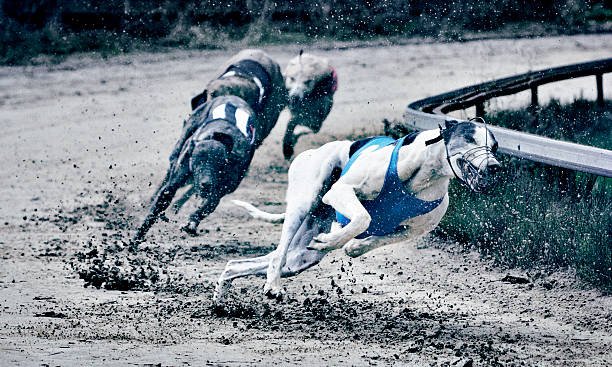
Exercise Plan for Greyhounds
Greyhounds are often associated with racing, but it’s essential to provide them with a well-rounded exercise routine that goes beyond just running. Here’s a comprehensive exercise plan for greyhounds:
1. Daily Walks: Greyhounds benefit from daily walks to maintain their cardiovascular health and muscle tone. Aim for at least 30 minutes to an hour of walking each day.
2. Leash Training: Due to their strong prey drive, leash training is crucial. Ensure they are well-behaved on the leash to prevent sudden lunges after small animals.
3. Playtime: Engage your greyhound in interactive play sessions. Games like fetch or using toys that encourage mental stimulation are ideal. Allocate at least 20-30 minutes of playtime daily.
4. Off-Leash Exercise: Greyhounds enjoy the opportunity to run freely in a secure, fenced area. Ensure they have a safe space to stretch their legs and engage in full-speed sprints.
5. Agility Training: Consider agility training as a way to challenge your greyhound both mentally and physically. It can help improve their coordination and focus.
6. Socialization: Regular socialization with other dogs and people is essential. It helps prevent shyness or aggression and ensures your greyhound is well-adjusted.
7. Mental Stimulation: Greyhounds are intelligent dogs. Puzzle toys, treat-dispensing toys, and obedience training can provide mental exercise and prevent boredom.
8. Short, Frequent Sessions: Greyhounds have bursts of energy but also enjoy lounging. Short, frequent exercise sessions are often more effective and enjoyable for them.
9. Rest: Ensure your greyhound has a comfortable and quiet place to rest. These dogs enjoy lounging and napping after periods of activity.
Breed-Specific Exercise Needs
While greyhounds may seem like high-energy dogs, they are often referred to as “couch potatoes” due to their love for lounging. However, they still have specific exercise needs:
1. Sprinters: Greyhounds excel in short sprints but may tire quickly during extended running. Keep their exercise sessions short but intense.
2. Sensitivity to Weather: Greyhounds have thin skin and minimal body fat, making them sensitive to extreme temperatures. In hot weather, exercise during the cooler parts of the day, and in cold weather, provide them with a coat or sweater.
3. Social Dogs: Greyhounds enjoy the company of other dogs. Consider arranging playdates or trips to the dog park to fulfill their social needs.
4. Prevent Overexertion: While they are agile and love to run, be cautious not to overexert them. Watch for signs of fatigue and provide water breaks during exercise.
Nutrition and Feeding Guidelines
Maintaining a healthy diet is vital for your greyhound’s overall health and energy levels. Here are some specific dietary recommendations:
1. High-Quality Dog Food: Choose a high-quality commercial dog food that is appropriate for your greyhound’s age, size, and activity level. Look for formulations that prioritize lean protein sources.
2. Portion Control: Greyhounds are prone to obesity, so monitor their weight and adjust their portion sizes accordingly. Follow the feeding guidelines on the dog food packaging, but consult with your veterinarian for personalized recommendations.
3. Avoid Table Scraps: Avoid feeding your greyhound table scraps, as some human foods can be harmful to dogs. Stick to their regular dog food.
4. Fresh Water: Ensure your greyhound has access to clean and fresh water at all times, especially after exercise.
5. Dietary Restrictions: Some greyhounds may have dietary restrictions or allergies, so be mindful of their specific needs. Consult with your veterinarian if you suspect any food sensitivities.
6. Feeding Schedule: Establish a consistent feeding schedule. Most greyhounds do well with two meals a day, but consult with your veterinarian for guidance.
7. Special Diets: In some cases, your greyhound may benefit from a special diet due to medical conditions or allergies. Work closely with your vet to determine the best course of action.
In conclusion, providing proper exercise and nutrition for your greyhound is essential for their physical and mental well-being. Tailor their exercise routine to their specific needs, and choose a high-quality dog food to keep them healthy and happy. Regular veterinary check-ups can help ensure your greyhound maintains an optimal weight and overall health.
8. Socialization and Training Tips for Greyhounds
Greyhounds are known for their gentle nature and intelligence, making them trainable and well-suited to family life. In this section, we’ll provide breed-specific training tips, taking into account their temperament and intelligence. We’ll also offer advice on how to socialize greyhounds with other dogs and people.

Training Tips for Greyhounds
Greyhounds are intelligent dogs with a gentle disposition. Here are some training tips specific to the breed:
1. Positive Reinforcement: Greyhounds respond exceptionally well to positive reinforcement techniques. Use treats, praise, and affection to reward good behavior during training sessions.
2. Consistency: Be consistent in your commands and expectations. Greyhounds thrive on routine and clear communication.
3. Start Early: Begin training and socialization as early as possible. Puppy training classes can be beneficial for both socialization and basic obedience.
4. Leash Training: Greyhounds have a strong prey drive, so leash training is essential. Teach them to walk politely on a leash to prevent pulling and sudden lunges.
5. Housetraining: Greyhounds are usually clean dogs and are often housetrained quickly. Be patient and use positive reinforcement when they eliminate outside.
6. Socialization: Expose your greyhound to various environments, people, and other dogs from an early age. This helps them become well-adjusted and confident.
7. Crate Training: Consider crate training, as greyhounds often enjoy having a safe and cozy space of their own. Make the crate a positive place with treats and toys.
8. Mental Stimulation: Greyhounds are not only physically active but also mentally sharp. Puzzle toys and brain games can keep them engaged and prevent boredom.
9. Be Gentle: Greyhounds are sensitive dogs, so use a gentle and patient approach to training. Avoid harsh corrections or punishment, as it can be counterproductive.
10. Recall Training: Due to their strong prey drive, practice recall commands in a secure, fenced area before allowing off-leash freedom in open spaces.
Socialization Tips
Socializing your greyhound is crucial for their well-rounded development and ensures they are comfortable around other dogs and people:
1. Puppy Playdates: Arrange playdates with other puppies or well-mannered dogs in a safe environment. This helps your greyhound learn appropriate social behaviors.
2. Dog Parks: Visit dog parks to expose your greyhound to a variety of dogs and play styles. Ensure your dog’s recall is reliable before allowing off-leash play.
3. Obedience Classes: Enroll in obedience classes or training sessions that include socialization opportunities. These classes provide structured environments for learning and socializing.
4. Expose to Different People: Introduce your greyhound to people of various ages, genders, and appearances. This helps prevent shyness or fearfulness.
5. Supervised Interactions: Always supervise interactions with other dogs and people, especially in the early stages of socialization.
6. Positive Experiences: Ensure that socialization experiences are positive and enjoyable for your greyhound. Use treats and praise to reward calm and friendly behavior.
9. Common Behavioral Traits of Greyhounds
Understanding the common behavioral traits of greyhounds can help you better manage and enjoy your relationship with this breed. Greyhounds have both positive and challenging characteristics, and being aware of them can lead to a harmonious partnership.
Positive Behavioral Traits
1. Gentle Nature: Greyhounds are known for their gentle and affectionate disposition. They often get along well with children and make loving family pets.
2. Calm Demeanor: Greyhounds are typically laid-back dogs that enjoy lounging around the house. They can be content with less exercise than some other breeds.
3. Low Grooming Needs: Their short coat requires minimal grooming, which makes them relatively low-maintenance in terms of grooming.
4. Minimal Barking: Greyhounds are not known for excessive barking, which can be a relief for those in shared living spaces.
5. Cleanliness: Greyhounds are usually clean dogs and tend to be housetrained relatively quickly.
Challenging Behavioral Traits
1. Sensitivity: While their sensitivity can be an asset in training, it can also make them more prone to anxiety or fearfulness if not properly socialized.
2. Prey Drive: Greyhounds have a strong prey drive, and some may be inclined to chase small animals, including cats or squirrels.
3. Reserved with Strangers: Greyhounds can be somewhat reserved or aloof with strangers, which can sometimes be mistaken for shyness or standoffishness.
4. Cold Sensitivity: Due to their thin coat and lean bodies, greyhounds are sensitive to cold weather and may require extra protection in chilly temperatures.
5. Health Considerations: Greyhounds can be prone to certain health issues, such as bloat and heart disease. Regular vet check-ups are essential.
Managing and Addressing Behavioral Issues
To manage and address behavioral issues in greyhounds, consider the following:
1. Positive Reinforcement Training: Use positive reinforcement techniques to encourage good behavior and address any behavioral challenges.
2. Socialization: Continue socializing your greyhound throughout their life to prevent fearfulness and aggression.
3. Routine and Consistency: Stick to a routine, be consistent in your commands, and provide a stable environment for your greyhound.
4. Address Health Concerns: Regular veterinary check-ups can catch and address health issues early, preventing behavioral changes due to pain or discomfort.
5. Seek Professional Help: If you’re struggling with specific behavioral issues, consider consulting a professional dog trainer or behaviorist for guidance.
In conclusion, greyhounds are known for their gentle nature and calm demeanor, but they also have unique sensitivities and traits. Understanding their behavior and providing proper training and socialization can help you build a strong bond with your greyhound and ensure a harmonious life together.
10. Personal Stories and Testimonials: A Glimpse into Life with Greyhounds
In this section, we’ll bring the world of greyhounds to life by sharing real-life stories and testimonials from owners of this unique breed. These personal anecdotes provide a human touch, offering practical insights into the cost of owning greyhounds, expenses on grooming and care, as well as the pros and cons of having them as pets.
The Joy of Welcoming a Greyhound into Our Home
Testimonial by Sarah R.
When my husband and I decided to adopt a dog, we weren’t sure what breed would be the right fit for our family. After extensive research, we came across the greyhound breed. We were immediately drawn to their gentle nature and calm demeanor.
One sunny afternoon, we visited a local greyhound rescue organization, where we met our future fur baby, Luna. She was a retired racing greyhound with a sleek, elegant figure and the sweetest eyes you can imagine. Luna was a bit reserved at first, but it didn’t take long for her to steal our hearts.
Cost of Owning a Greyhound
The initial adoption fee was around $300, which covered spaying, vaccinations, and a basic health check. While greyhounds are relatively low-maintenance in terms of grooming, we did invest in a comfortable bed for Luna due to her bony build, which cost around $50. Additionally, a sturdy leash and collar set, food and water bowls, and some toys rounded out the initial expenses.
One significant cost that surprised us was the adoption group’s recommendation for a good-quality, large dog coat. Greyhounds have thin coats and are sensitive to cold weather, so we invested in a warm coat for Luna, which was around $80. Regular veterinary check-ups and vaccinations averaged around $200 per year, but they were essential for her well-being.
The Pros of Having a Greyhound
Luna quickly became an integral part of our family, and we couldn’t be happier with our decision to adopt a greyhound. Here are some of the pros we’ve experienced:
- Gentle and Affectionate: Luna is the gentlest dog we’ve ever known. She loves snuggling on the couch and giving us affectionate nuzzles.
- Low Exercise Requirements: While she enjoys a good sprint in the yard, Luna is perfectly content with a daily walk and playtime in the house. Her low exercise needs fit well with our busy schedules.
- Minimal Shedding: As greyhounds have short coats, we hardly ever find dog hair on our furniture or clothes. This was a pleasant surprise.
- Great with Kids: Luna is fantastic with our kids. She’s patient and tolerant, making her an ideal family pet.
The Cons of Having a Greyhound
While our experience with Luna has been overwhelmingly positive, there are a few cons to consider:
- Sensitivity to Cold: Living in a region with cold winters, we need to ensure Luna is adequately dressed in chilly weather. Her sensitivity to the cold is something to keep in mind.
- Reserved Nature: Greyhounds can be somewhat reserved with strangers. While this isn’t necessarily a con, it’s essential to provide them with proper socialization.
- Prey Drive: Luna has a strong prey drive, which means we need to be cautious around small animals during walks. She can get quite excited when she spots a squirrel.
A Happy Ending for a Retired Racing Greyhound
Testimonial by Mark and Lisa S.
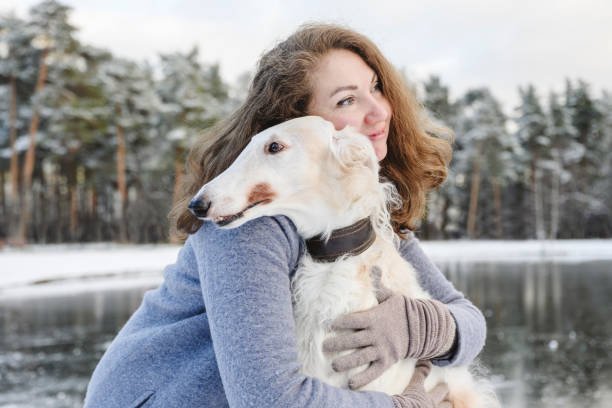
Our journey with greyhounds began when we adopted Max, a retired racing greyhound. Max had spent most of his life on the track, but it was time for him to enjoy his golden years as a beloved companion.
Cost of Owning a Greyhound
The initial adoption fee for Max was $250, which included his neutering, vaccinations, and a dental check-up. We also invested in a comfortable memory foam bed to provide him with proper support and comfort, which cost us around $60.
One aspect of greyhound ownership that can be challenging is finding the right-fitting gear, such as collars and harnesses. Greyhounds have slender necks and deep chests, so we had to order custom-made collars, which were around $30 each. Regular veterinary expenses, including annual check-ups and vaccinations, averaged $150 per year.
The Pros of Having a Greyhound
Max has brought immeasurable joy into our lives, and we’re grateful for every moment we spend with him. Here are some of the pros we’ve experienced:
- Laid-Back Nature: Max is incredibly laid-back. He enjoys lounging on the couch or sunbathing in the yard. His calm demeanor is a source of tranquility for us.
- Minimal Grooming: We appreciate the fact that greyhounds are low-maintenance when it comes to grooming. His short coat requires minimal brushing, and we hardly ever find stray hairs around the house.
- Great for Apartments: Max’s low exercise needs make him a fantastic choice for apartment living. He doesn’t need a large yard to roam; a daily walk suffices.
- Loyal Companion: Max’s loyalty and affection are unmatched. He’s always there to provide comfort and companionship.
The Cons of Having a Greyhound
While Max is a beloved member of our family, there are a few cons to consider:
- Sensitivity to Cold: Like many greyhounds, Max is sensitive to cold weather. We ensure he’s well-insulated with coats and sweaters during winter.
- Reserved with Strangers: Greyhounds can be reserved with strangers, so it’s essential to socialize them early to prevent any shyness or aloofness.
- Prey Drive: Max’s strong prey drive means we need to be vigilant during walks to avoid sudden lunges after small animals.
A Heartwarming Bond with Our Greyhound, Bella
Testimonial by Mike and Laura D.
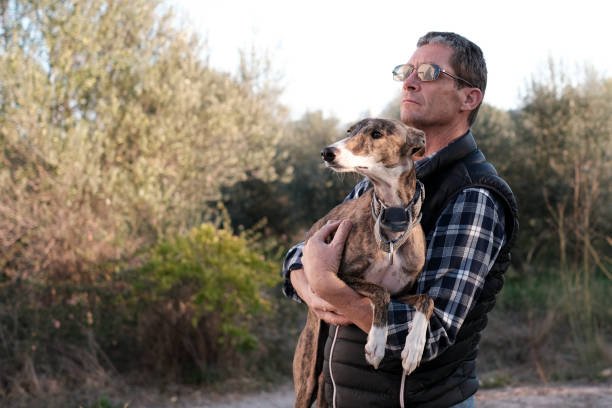
Our greyhound, Bella, came into our lives during a time when we needed her the most. We were initially hesitant about adopting a retired racing greyhound, but it turned out to be one of the best decisions we’ve ever made.
Cost of Owning a Greyhound
The initial adoption fee for Bella was $300, which included spaying, vaccinations, and a thorough health check. Additionally, we invested in a cozy, orthopedic bed for Bella, costing us around $70. Her slender build and unique body shape meant we had to find the right-fitting collars and harnesses, which added an extra $40 to our initial expenses.
Annual veterinary check-ups and vaccinations averaged around $180. One aspect that took us by surprise was the need for a high-quality, warm winter coat due to Bella’s sensitivity to cold weather. We spent approximately $90 on a well-insulated coat to keep her comfortable during winter walks.
The Pros of Having a Greyhound
Bella has brought immense joy into our lives, and we’re grateful for every moment with her. Here are some of the pros we’ve experienced:
- Gentle and Affectionate: Bella’s gentle nature and affectionate personality have made her an integral part of our family. She loves cuddling on the couch and giving us those soulful greyhound eyes.
- Low Exercise Needs: Bella is content with a daily walk and some playtime in the yard. Her low exercise requirements fit well with our busy schedules.
- Minimal Grooming: We appreciate the minimal grooming needs of greyhounds. Bella’s short coat requires little maintenance.
- Good with Children: Bella is fantastic with our children. She’s patient and tolerant, making her an ideal family pet.
The Cons of Having a Greyhound
While Bella has been a wonderful addition to our family, there are a few cons to be aware of:
- Sensitivity to Cold: Bella’s sensitivity to cold weather means we need to take extra precautions during winter. This includes using a warm coat and limiting outdoor time in frigid conditions.
- Reserved Nature: Greyhounds can be reserved with strangers. Early socialization is crucial to ensure they are comfortable around new people.
- Prey Drive: Bella’s strong prey drive means we must be vigilant during walks to prevent sudden lunges after small animals.
A Life Enriched by Greyhounds
Testimonial by Emma and James M.

Our journey with greyhounds began when we adopted our first greyhound, Charlie, and later welcomed Bella into our home. These remarkable dogs have enriched our lives in countless ways.
Cost of Owning Greyhounds
The initial adoption fees for both Charlie and Bella were $250 each, covering their spaying/neutering, vaccinations, and health check-ups. We invested in comfortable memory foam beds for both, costing us a total of $120. Their unique body shapes meant we had to purchase custom-made collars and harnesses for $60 each.
Annual veterinary expenses, including check-ups and vaccinations, averaged around $300 for both dogs. Additionally, we spent $180 on high-quality winter coats to keep them warm during cold months.
Frequently Asked Questions (FAQs) About Greyhounds
In this section, we’ll address some common questions that often come up regarding the Greyhound breed. Whether you’re a potential Greyhound owner or simply curious about these elegant dogs, these FAQs should provide you with valuable insights.
1. What is the Origin of the Greyhound Breed?
Answer: The Greyhound is one of the oldest dog breeds, with a history dating back over 4,000 years. They originated in ancient Egypt, where they were initially bred for hunting game and later became associated with royalty. Over time, Greyhounds spread to other parts of the world, including Europe, where they were used for coursing and racing.
2. Are Greyhounds Good Family Dogs?
Answer: Yes, Greyhounds can make excellent family dogs. They are known for their gentle and calm demeanor, which makes them well-suited for families with children. While they may have a reputation as racing dogs, Greyhounds are generally affectionate, loyal, and get along well with both adults and kids.
3. Do Greyhounds Require a Lot of Exercise?
Answer: Contrary to popular belief, Greyhounds are not high-energy dogs that need constant exercise. They do enjoy a good sprint, but they are often referred to as “couch potatoes” due to their love for lounging. A daily walk and some playtime in a secure area are usually sufficient to keep them happy and healthy.
4. Are Greyhounds Easy to Train?
Answer: Greyhounds are generally intelligent dogs, but they have an independent streak, which can make training a bit challenging. They are sensitive and respond best to positive reinforcement techniques. Consistency and patience are key when training a Greyhound, and early socialization is important to help them adapt to various situations.
5. Do Greyhounds Get Along with Other Pets?
Answer: Greyhounds typically get along well with other dogs, especially if they have been socialized from a young age. However, due to their strong prey drive, it’s essential to introduce them to smaller pets like cats carefully. Some Greyhounds coexist peacefully with cats, while others may have a higher prey drive and need more supervision.
6. How Fast Can Greyhounds Run?
Answer: Greyhounds are renowned for their incredible speed. They can reach speeds of up to 45 miles per hour (72 kilometers per hour), which makes them one of the fastest dog breeds in the world. Their slender build and long legs contribute to their exceptional speed.
7. Are Greyhounds Prone to Health Issues?
Answer: Greyhounds are generally a healthy breed, but like all dogs, they can be prone to certain health issues. Some of the common health concerns in Greyhounds include bloat (gastric torsion), hip dysplasia, and osteosarcoma (a type of bone cancer). Regular vet check-ups and a balanced diet can help mitigate these risks.
8. What is the Lifespan of a Greyhound?
Answer: The typical lifespan of a Greyhound is between 10 to 14 years. With proper care, a healthy diet, and regular exercise, they can live a long and happy life. Genetics and breed-specific health concerns can also influence their lifespan.
9. Do Greyhounds Require Special Grooming?
Answer: Greyhounds have a short, smooth coat that doesn’t require extensive grooming. They are low shedders and are relatively easy to maintain. Regular brushing can help keep their coat clean and reduce shedding. However, Greyhounds are sensitive to cold weather due to their thin skin and lack of body fat, so they may need a sweater or coat in colder climates.
10. Can I Adopt a Retired Racing Greyhound?
Answer: Absolutely! Many retired racing Greyhounds are in need of loving homes. These dogs often transition well into family life, despite their racing background. There are numerous Greyhound adoption organizations dedicated to finding homes for retired racing Greyhounds. Adopting a retired racer can be a rewarding experience and a chance to provide a loving home for a deserving dog.
Now that we’ve covered these frequently asked questions, let’s summarize some essential information about Greyhounds in the following table for quick reference:
Greyhound Breed Summary
| Characteristic | Description |
|---|---|
| Origin | Ancient Egypt, with a history of over 4,000 years |
| Temperament | Gentle, calm, affectionate, and good with families |
| Exercise Needs | Moderate; daily walk and playtime |
| Trainability | Intelligent but independent; responds to positive reinforcement |
| Compatibility with Other Pets | Generally good with dogs; may require careful introduction to cats |
| Speed | Up to 45 miles per hour (72 kilometers per hour) |
| Common Health Issues | Bloat, hip dysplasia, osteosarcoma |
| Lifespan | 10 to 14 years |
| Grooming | Low-maintenance short coat; sensitive to cold weather |
| Adoption Opportunities | Retired racing Greyhounds make great pets |
In conclusion, Greyhounds are a unique and remarkable breed with a rich history and many endearing qualities. They can be wonderful family companions, provided they receive the care, love, and attention they deserve. If you’re considering bringing a Greyhound into your home, be prepared to offer them a comfortable environment and a lot of affection, and you’ll likely have a loyal and loving friend for many years to come.
Conclusion: Greyhounds – Your Gentle and Graceful Companions
In this comprehensive guide to Greyhounds, we’ve delved deep into the world of these elegant dogs, covering their history, characteristics, care, and more. As we conclude this article, let’s summarize the key points, stress the significance of responsible ownership, and encourage the adoption of these wonderful dogs.
Recap of Key Points
1. History and Origin
Greyhounds are one of the oldest dog breeds, originating in ancient Egypt over 4,000 years ago. They were initially bred for hunting and later became associated with royalty.
2. Temperament and Compatibility
Greyhounds are known for their gentle and calm demeanor, making them excellent family dogs. They get along well with children and can coexist peacefully with other dogs, though introductions to smaller pets like cats should be handled carefully.
3. Exercise and Training
Contrary to their racing reputation, Greyhounds are not high-energy dogs and enjoy lounging. A daily walk and some playtime are sufficient to keep them happy. Training can be a bit challenging due to their independence, but positive reinforcement and consistency are effective.
4. Health Considerations
While Greyhounds are generally healthy, they can be prone to certain issues such as bloat, hip dysplasia, and osteosarcoma. Regular vet check-ups, a balanced diet, and proper care can help mitigate these risks.
5. Lifespan and Grooming
Greyhounds typically live 10 to 14 years and have low-maintenance short coats. They are sensitive to cold weather and may need extra protection in colder climates.
6. Adoption Opportunities
Retired racing Greyhounds make wonderful pets and are often in need of loving homes. Consider adoption to provide a second chance to these graceful dogs.
Responsible Ownership Matters
As you contemplate bringing a Greyhound into your life, it’s crucial to understand the responsibilities that come with pet ownership. Responsible ownership not only benefits your pet but also contributes to a harmonious relationship between you and your furry companion.
Proper Care
Ensure that you can provide the following for your Greyhound:
- Nutritious Diet: Feed them a balanced diet suitable for their age and activity level. Consult your vet for dietary recommendations.
- Regular Exercise: While they don’t require intense exercise, they need daily walks and a secure area to stretch their legs.
- Healthcare: Schedule regular vet check-ups and vaccinations to monitor and maintain your Greyhound’s health.
- Affection and Attention: Greyhounds thrive on love and attention. Spend quality time with them to build a strong bond.
Training and Socialization
Greyhounds may be independent, but training and socialization are essential for their well-being. Invest time in:
- Basic Obedience: Teach them commands like sit, stay, and come, using positive reinforcement techniques.
- Socialization: Expose your Greyhound to various people, places, and situations to ensure they are well-adjusted and comfortable in different settings.
- Behavioral Training: Address any behavioral issues early with the help of a professional dog trainer if needed.
Safety Measures
Greyhounds have a strong prey drive, which means they may chase small animals. To keep them safe:
- Secure Fencing: Ensure your yard has a secure fence to prevent escapes and potential accidents.
- Leash Walking: Always use a leash when walking your Greyhound to prevent them from chasing after small creatures.
- Supervision: When introducing them to smaller pets, closely supervise their interactions until you are confident they will coexist peacefully.
Commitment
Remember that owning a Greyhound is a long-term commitment. They can live for over a decade, so be prepared to provide love, care, and attention throughout their life.
Encouraging Adoption
One of the most fulfilling ways to bring a Greyhound into your life is through adoption. Retired racing Greyhounds make fantastic pets, and there are many reasons to consider adoption:
Giving a Second Chance
Retired Greyhounds have often spent their early years on the racetrack. Adoption provides them with the opportunity to experience a loving home, comfortable surroundings, and a slower pace of life.
Great Temperament
These dogs have gentle and friendly temperaments, which make them ideal companions for families, singles, and seniors alike. Their calm nature and adaptability make them well-suited for various living situations.
Support Adoption Organizations
There are numerous Greyhound adoption organizations dedicated to finding loving homes for retired racers. By adopting, you not only provide a wonderful home for a deserving dog but also support the valuable work of these organizations.
Resources for Adoption
To get started on your journey to adopting a Greyhound, consider reaching out to these reputable adoption organizations and resources:
- Greyhound Adoption Organizations: Look for local or national organizations that specialize in Greyhound adoptions. They often have comprehensive information on available dogs, adoption processes, and support for new owners.
- Visit a Shelter: Some Greyhounds may be available for adoption at local animal shelters. Visit or contact your nearest shelter to inquire about Greyhound availability.
- Online Communities: Join online forums and communities dedicated to Greyhound enthusiasts. These platforms can provide valuable advice, recommendations, and insights into Greyhound adoption.
- Talk to Current Owners: If you know someone who owns a Greyhound, ask them about their experience and any tips they may have for potential adopters.
In conclusion, Greyhounds are remarkable dogs with a rich history and a bright future as loving family pets. Whether you choose to bring a Greyhound into your home through adoption or other means, remember that responsible ownership is key to their well-being. By providing them with proper care, training, and love, you can enjoy the companionship of these gentle and graceful dogs for many years to come. Consider adoption as a meaningful way to bring a Greyhound into your life while also making a positive difference in theirs.



